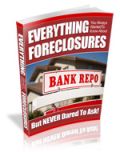Welcome to Repossession Guide
Repossession Stop Article

How To Make A Repossession Stop
from:There is really only one way to actually make a repossession stop, and that is to contact your creditors before the repossession process begins. In some areas and states the creditor has to legally notify you of a repossession, while in other's they don't. In the case of a home repossession, you will be notified regardless of what state you live in but a car or other item can be repossessed with just one skipped or defaulted payment, depending on the financing agreement and purchase contract that you signed.
Making a repossession stop usually includes being able to make a lump sum payment on the outstanding balance of the defaulted payments, paying off the loan in entirety or coming up with a schedule of repayment for the missed payments plus the future payments that the lender accepts. Using these options to make a repossession stop are the basic options, there may be others such as selling the item and paying the lender from the sale. In most cases in the "short sale" scenario the original borrower will still need to add in some cash to make sure that the loan is paid off in full.
Making a repossession stop, even if it means taking out another loan, often makes good sense if you have the ability to pay both the original loan as well as the second loan. A repossession is a huge negative on your credit score and rating and will remain on your credit record for seven years. Is some cases a repossession, especially on a large item such as a car or a house can prevent you from being able to get a loan for long after the seven years as it is likely that there have been other non-payments of loans on credit cards or other debts prior to the repossession which will often show up after the repossession occurs.
It is important under these situations that you acknowledge and proactively work towards preventing the repossession. Stop hiding or pretending that if you don't open the letters from the creditors they will just go away. This is probably the biggest mistake that consumer's make and it is easy to correct. Usually if you contact the creditor either before or immediately after the default in the payment they will be willing to consider your suggestions and work with you. If you allow the default payments to occur more than one payment period or simply don't respond to their calls and letters the lender has little choice but to move towards getting their property or item back.
Getting the advice of a credit counselor, attorney or other financial expert is a great idea if you are worried about repossession. Often working with these professionals will help your lender understand you are serious about correcting the problem and have a plan for the future.



